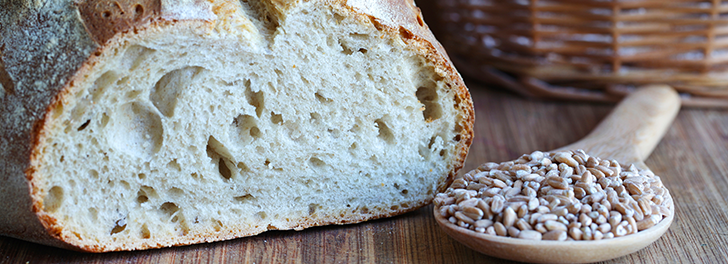The Rise of Variety Bread and How to Meet Consumer Expectations: Q&A with Baking Industry Expert

The popularity of variety and artisan bread has been on a steady rise for the past several years, due to consumer expectations and their growing interest in health trends. Because the process of producing variety and artisan bread differs from pan bread, training for baking professionals is paramount. David Bauman, Baking Professional for AIB International who specializes in bread and rolls, explains how learning the art of popular variety and artisan bread will help companies capture a valuable market.
The definition of variety bread really differs depending on who you ask, so how do you define variety bread?
That’s a good question. Within the industry, they’ve got different thoughts and processes about variety bread. If a plant’s going to claim it as a “variety bread” or a “100% whole grain”, they have to have a certain amount of grains added into the bread because there is a standard. But for the most part, variety breads include whole wheat breads, wheat breads, multigrain breads or breads made with whole grains.
Why has variety bread really taken off in the industry and among consumers?
I always look back at the consumer preference. They’re looking for something healthier or something with more fiber because the doctors are saying that it’s better. I think back to when the ultra-grain white flour was developed and the discussion surrounding it. The goal was to get more healthy fibers to the children. One of the most popular meals for children is a peanut butter and jelly sandwich. With white bread, you don’t get all the fiber that you’re supposed to. They made this ultra-grain wheat bread, which is a little bit darker than the white, that really helped bring more wholesome fiber to children. That’s just one example of why a lot of the variety bread came up in the industry quickly.
What is one of the biggest obstacles the baking industry is facing in relation to training right now?
Sadly, I will say that a really big obstacle is that bakeries are like a revolving door when it comes to employees. The people are not staying. It’s hard work and the bakery is run pretty much 24/7. The longevity of being in the industry and staying in the baking industry has been challenging for the last 8 to 10 years. Unfortunately, we end up having to train and re-train people constantly because of the high turnover rate, which can get expensive. In addition to this, as retirees are leaving the industry, we need to replace them with trained employees. It’s been quite the challenge and any bakery you talk to will tell you that.
How do you think bakeries can overcome the workforce gap and high turnover rate obstacles?
The business is growing, which makes it even more competitive. To have a competitive edge, it’s important for bakeries to offer variety bread that is high-quality. High-quality bread is produced by well-trained personnel. AIB’s collection of Baking Specialist eLearning courses are really helpful because they enable new bakers to receive affordable and thorough training. Even if that baker only stays with the bakery six months, the employee learned valuable skills in a reasonable amount of time. If they show further interest in their career, the employer can follow it up by sending them to AIB’s in-person training.
What do you recommend companies do to keep up with the consumer expectations within the baking industry?
Well, it’s always evolving. There’s always something new coming up, so it’s important to continuously absorb information and do training. AIB is constantly striving to keep up with that. I’ve told a graduating class during a speech that it’s just as important for them to give back to the organizations that train them. I said, “You’re going to have something new in your industry changing. It’s important for you to share that information with us so that we can strengthen our training for the industry and to keep up for the next generation of bakers.”





